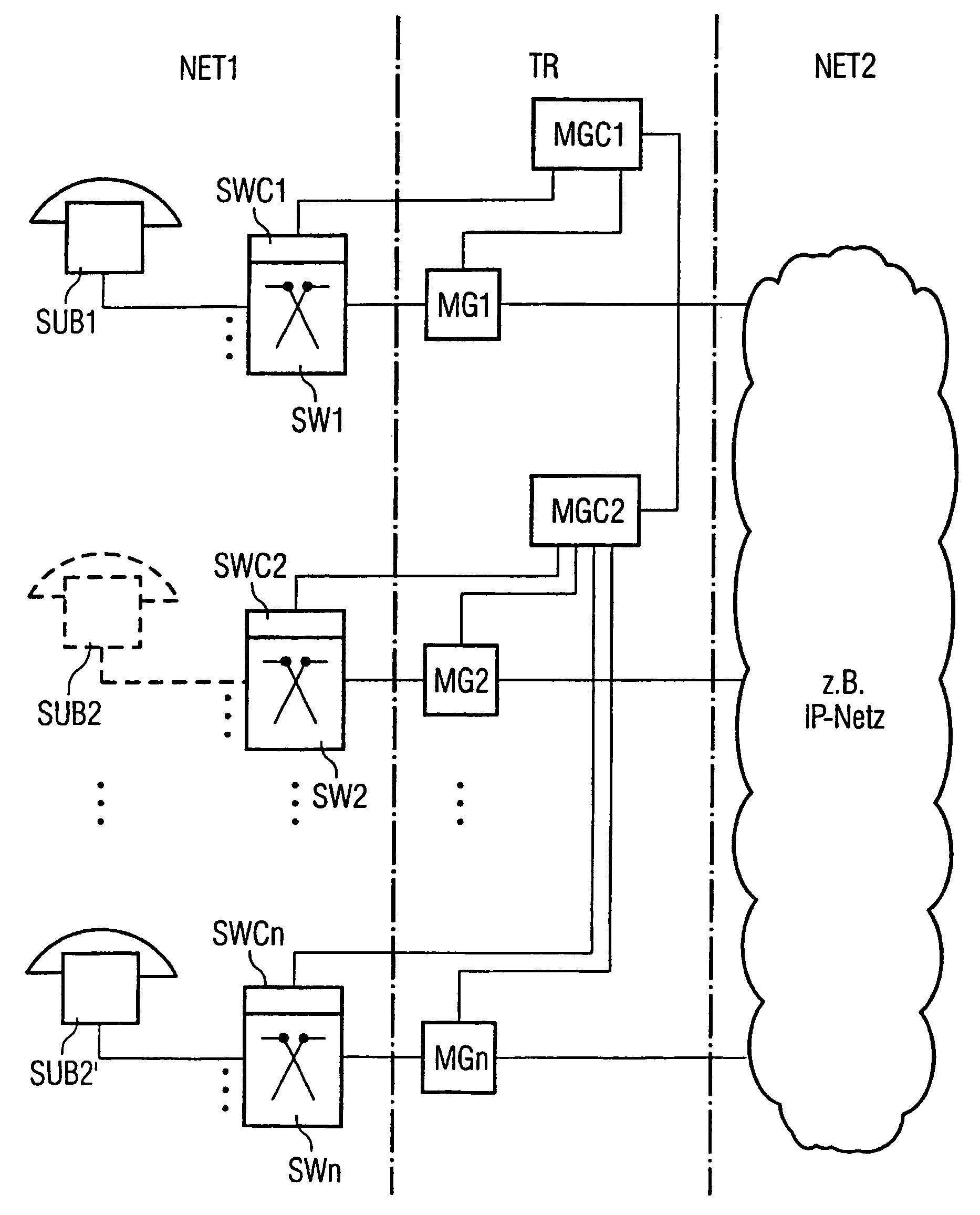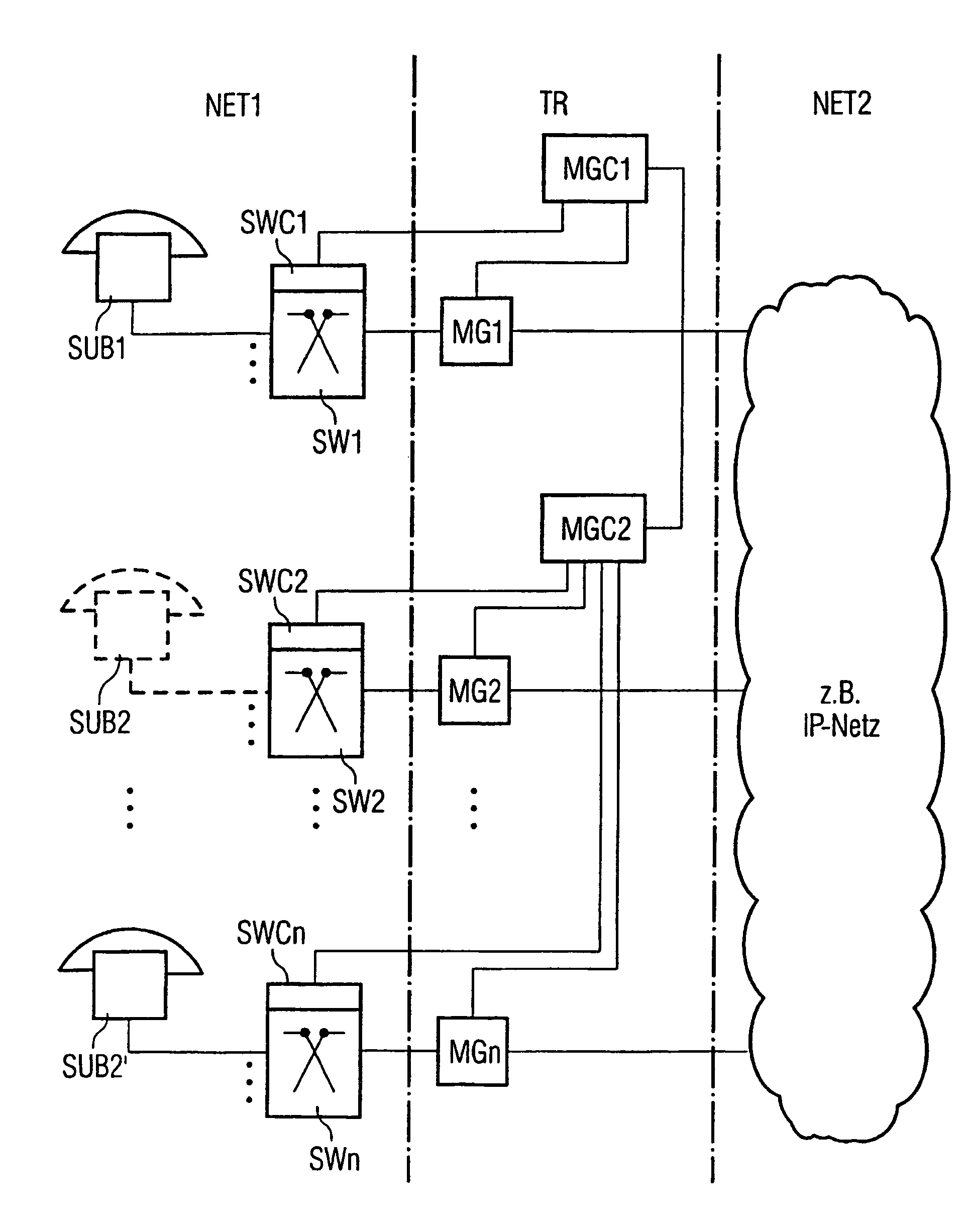Method for establishing a communication link between subscriber stations of a switching system which comprises two communication networks
a communication link and switching system technology, applied in the field of methods, can solve the problems of deterioration in quality during transmission, problem also occurring, and more serious, and achieve the effect of simple and reliable signaling procedure and alleviation of signal processing load
- Summary
- Abstract
- Description
- Claims
- Application Information
AI Technical Summary
Benefits of technology
Problems solved by technology
Method used
Image
Examples
Embodiment Construction
[0032]Associated with the switching system shown in the drawing is a first communication system NET1, which may for example be a time-multiplex switching system, such as the EWSD system in commercial use. This first communication network NET1 has a plurality of switching centers SW1, SW2 to SWn, which are equipped with their own control devices SWC1, SWC2 to SWCn (only shown diagrammatically here). These control devices SWC1 to SWCn are used both to select the respective switching center as a function of control and / or signaling information, in particular dialing information, from subscriber stations which are linked to the respective switching center, and to receive and forward such control and / or signaling information from or to the transition area TR shown in the drawing.
[0033]Linked to the switching centers SW1 to SWn of the first communication network NET1 is a plurality of subscriber stations, which may include telephone subscriber terminals, fax machines, data terminals, PCs ...
PUM
 Login to View More
Login to View More Abstract
Description
Claims
Application Information
 Login to View More
Login to View More - R&D
- Intellectual Property
- Life Sciences
- Materials
- Tech Scout
- Unparalleled Data Quality
- Higher Quality Content
- 60% Fewer Hallucinations
Browse by: Latest US Patents, China's latest patents, Technical Efficacy Thesaurus, Application Domain, Technology Topic, Popular Technical Reports.
© 2025 PatSnap. All rights reserved.Legal|Privacy policy|Modern Slavery Act Transparency Statement|Sitemap|About US| Contact US: help@patsnap.com


